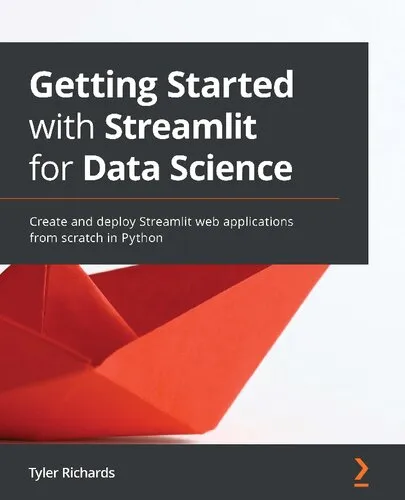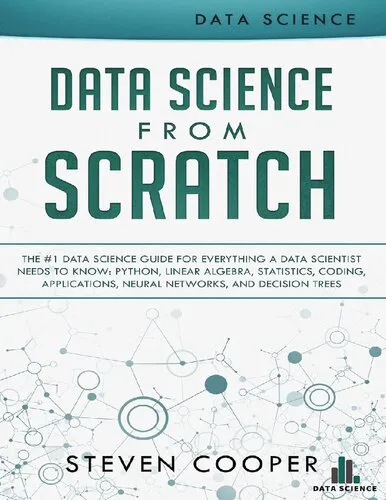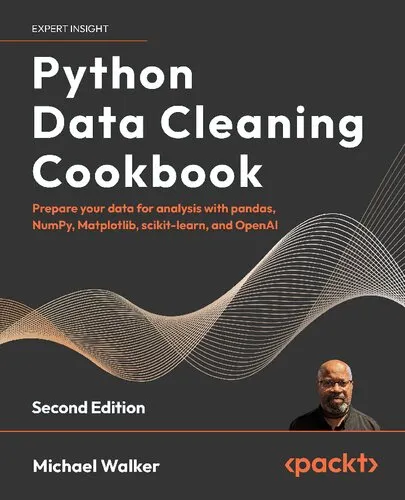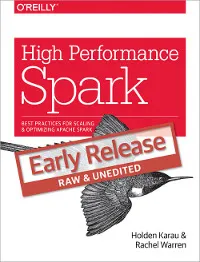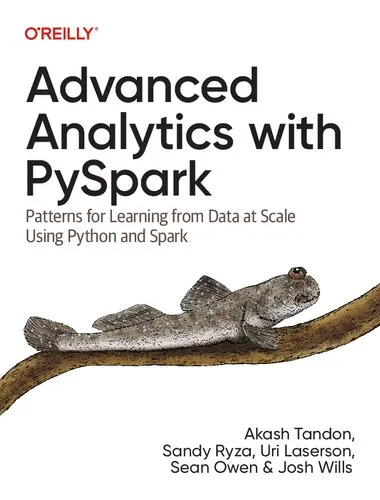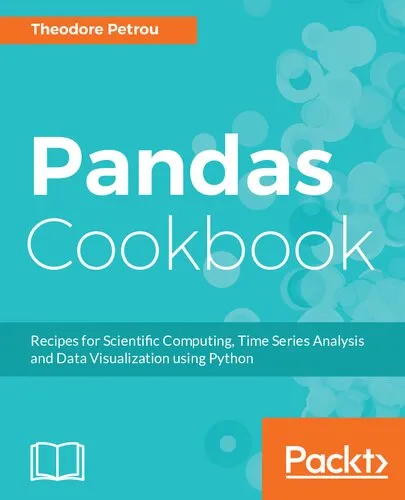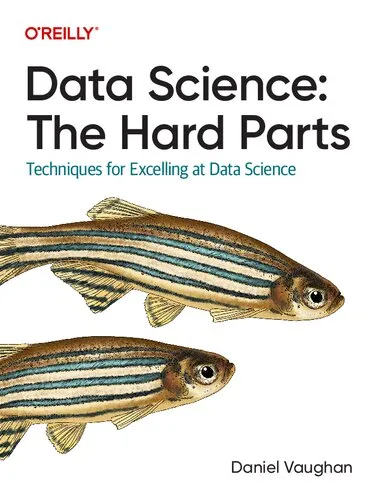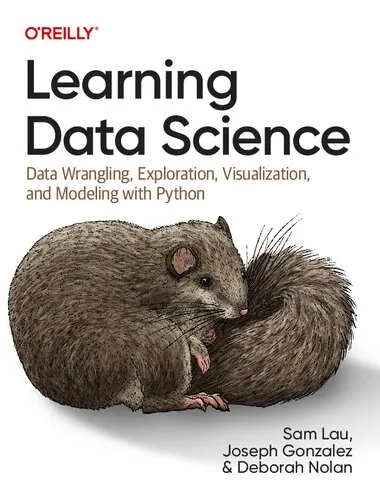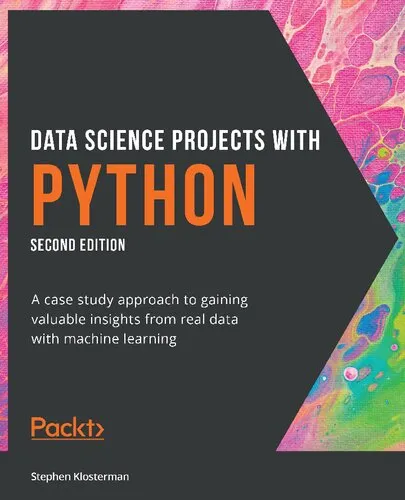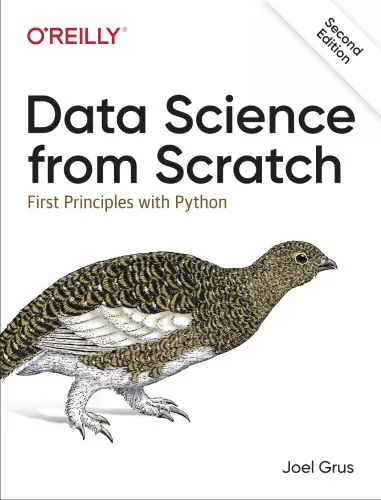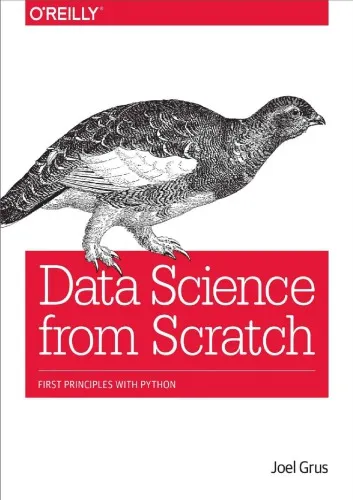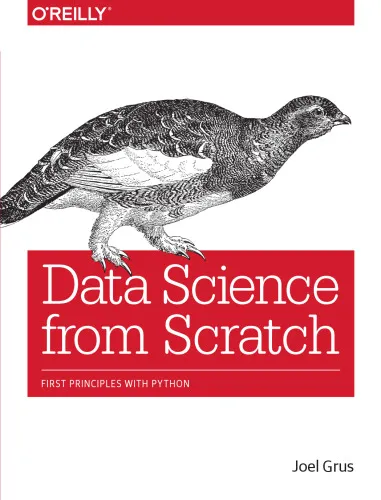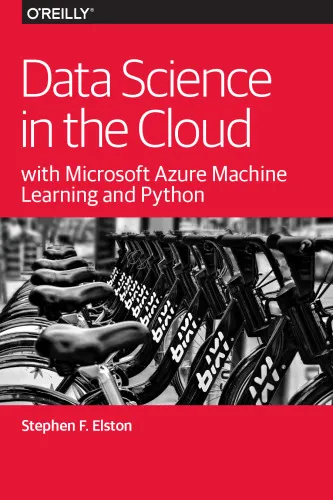Building Statistical Models in Python
4.4
بر اساس نظر کاربران

شما میتونید سوالاتتون در باره کتاب رو از هوش مصنوعیش بعد از ورود بپرسید
هر دانلود یا پرسش از هوش مصنوعی 2 امتیاز لازم دارد، برای بدست آوردن امتیاز رایگان، به صفحه ی راهنمای امتیازات سر بزنید و یک سری کار ارزشمند انجام بدینکتاب های مرتبط:
خلاصه تحلیلی کتاب
کتاب Building Statistical Models in Python اثری است که با رویکردی سیستماتیک، مسیر ساخت و تحلیل مدلهای آماری را در محیط Python روشن میسازد. این اثر بهطور ویژه برای پژوهشگران، دانشجویان و علاقهمندان علوم داده تدوین شده است تا فرآیند گامبهگام مدلسازی، از دادههای خام تا نتیجهگیری علمی، را با دقت بیاموزند.
نویسندگان کتاب، یعنی Huy Hoang Nguyen، Paul N Adams و Stuart J Miller، با تکیه بر تجربههای عملی و پژوهشهای معتبر، مجموعهای از مثالهای واقعی و سناریوهای کاربردی را گردآوری کردهاند که نهتنها توانایی کاربر در استفاده از کتابخانههای Python را تقویت میکند، بلکه مهمتر از آن، نگاه تحلیلی و منتقدانه به دادهها را پرورش میدهد.
این کتاب به طور جامع به جنبههای مختلف مدلسازی آماری، از مفاهیم پایه گرفته تا مباحث پیشرفته مانند regularization، validation و interpretation نتایج پرداخته و مطالعه آن برای هر کسی که در حوزه دادهکاوی یا یادگیری ماشین فعالیت دارد، توصیه میشود.
نکات کلیدی و کاربردی
یکی از مهمترین ویژگیهای کتاب Building Statistical Models in Python، رویکرد عملی و پروژهمحور آن است. خوانندگان نهتنها با مفاهیم نظری آشنا میشوند، بلکه با پیادهسازی آنها در قالب کد Python تجربه عملی کسب میکنند.
مواردی همچون انتخاب صحیح مدل، تنظیم hyperparameterها، ارزیابی عملکرد مدل با معیارهای آماری دقیق، و نحوه تفسیر خروجیها از جمله نکات کلیدی هستند که در این کتاب با مثالهای شفاف توضیح داده شدهاند.
از دیگر نکات برجسته، توجه به جنبه reproducibility در پروژههای آماری است که خواننده را به سمت طراحی فرآیندهای قابل بازتولید و مستندسازی دقیق هدایت میکند.
نقلقولهای ماندگار
کتاب سرشار از جملات و توصیههای ارزشمند است که میتوانند برای سالها الهامبخش پژوهشگران و تحلیلگران داده باشند.
هر مدل آماری، بازتابی از فرضیات ما درباره جهان است؛ اگر فرضیات را بهدرستی نسنجیم، مدل نیز راه را به خطا میرود. نامشخص
دادهها هرگز به خودی خود سخن نمیگویند؛ این ما هستیم که با مدلسازی، به آنها زبان میبخشیم. نامشخص
انتخاب مدل مناسب مهمتر از پیچیدهکردن بیدلیل آن است. نامشخص
چرا این کتاب اهمیت دارد
در عصری که حجم دادههای قابل دسترس رو به انفجار گذاشته، توانایی مدلسازی صحیح و علمی دادهها به یکی از مهارتهای کلیدی پژوهشگران و تحلیلگران بدل شده است. کتاب Building Statistical Models in Python دقیقاً به همین نیاز بنیادی پاسخ میدهد.
اهمیت این کتاب نهتنها در آموزش تکنیکهای موجود، بلکه در پرورش بینش تحلیلی و انتقادی نسبت به دادهها و مدلها است. خواننده با مطالعه آن میآموزد چگونه میان دقت، پیچیدگی و قابلیت توضیح مدل تعادل ایجاد کند.
به دلیل نبود منبع معتبر در دسترس، اطلاعات نامشخصی در مورد سال انتشار یا جوایز این کتاب وجود دارد. آنچه مسلم است، این اثر توانسته جایگاه خود را در میان منابع آموزش مدلسازی آماری به زبان Python تثبیت کند.
نتیجهگیری الهامبخش
مطالعه کتاب Building Statistical Models in Python فرصتی است برای هر فردی که میخواهد مهارت خود را در مدلسازی آماری توسعه دهد و در کنار آن، دیدگاه تحلیلی خود را نسبت به دادهها گسترش دهد. این اثر نهتنها ابزار فنی را در اختیار شما میگذارد، بلکه شما را به اندیشیدن عمیقتر درباره معن
Analytical Summary
*Building Statistical Models in Python* is a comprehensive and well-structured resource authored by Huy Hoang Nguyen, Paul N Adams, and Stuart J Miller. Designed for academics, data scientists, and professional analysts, this book serves as a structured guide to building, validating, and deploying statistical models using the versatile Python programming language. It blends theoretical foundations with practical implementation, ensuring that readers gain both the conceptual understanding and the applied skills necessary for rigorous statistical work.
Python has become a cornerstone in the modern data science ecosystem, offering a rich suite of libraries such as NumPy, Pandas, Statsmodels, and scikit-learn. This book strategically integrates these tools alongside statistical theory, enabling readers to seamlessly translate mathematical models into executable code. While many online resources cover fragments of statistical modeling, *Building Statistical Models in Python* consolidates knowledge into a coherent framework, making it invaluable for those seeking mastery.
The authors place strong emphasis on reproducible workflows—critical in research and industry—while also teaching readers how to evaluate model performance using robust statistical metrics. This dual focus on theory and practice gives the book its authoritative yet approachable character, making it suitable for both specialized courses and self-directed professional development.
Key Takeaways
Readers emerge from *Building Statistical Models in Python* equipped with the ability to construct, interpret, and refine statistical models for diverse applications.
The text drills deeply into topics such as probability distributions, hypothesis testing, regression analysis (linear and logistic), time series forecasting, and model selection techniques. Its clear, methodical presentation allows readers to progress from foundational concepts to advanced modeling approaches without unnecessary detours.
By the end of the book, readers will have not only learned how to implement statistical techniques in Python but also how to critically assess their results, document their processes, and communicate insights effectively to stakeholders.
Memorable Quotes
“A sound statistical model is the bridge between data and decision-making.” Unknown
“Python’s ecosystem makes statistical rigour accessible to every serious analyst.” Unknown
“The union of theoretical insight and applied code is where true analytics power resides.” Unknown
Why This Book Matters
For any professional invested in data-driven decision-making, *Building Statistical Models in Python* is more than just a technical manual—it's a strategic asset.
In an age when organizations collect massive volumes of data, the ability to extract meaningful patterns and predictions confers a tremendous competitive advantage. This book demystifies the complex landscape of statistical modeling, ensuring that readers can move from raw datasets to actionable insights with confidence and clarity.
Its cross-disciplinary relevance—spanning fields such as economics, public health, engineering, and marketing—means that the skills it imparts are adaptable to virtually any domain. Unlike fragmented tutorials, it provides a consistent pedagogical structure, which fosters durable learning.
Information unavailable regarding awards or publication year, as no reliable public source currently confirms these details.
Inspiring Conclusion
*Building Statistical Models in Python* stands as a testament to the power of uniting statistical theory with practical programming skill, offering readers a roadmap from basic concepts to advanced applications.
Whether you are an academic venturing deeper into empirical analysis, a professional analyst refining your predictive capabilities, or a student eager to apply statistical methods to real-world problems, this book provides the structure and guidance to succeed. Its careful integration of Python’s statistical libraries ensures that the journey from raw data to insightful conclusions is both efficient and reproducible.
The next step is yours: engage with the material, apply the techniques to your own datasets, share your discoveries, and discuss your findings with peers and mentors. In doing so, you will not only enrich your own expertise but also contribute to the growing, collaborative body of knowledge that defines the modern data science community.
دانلود رایگان مستقیم
شما میتونید سوالاتتون در باره کتاب رو از هوش مصنوعیش بعد از ورود بپرسید
دسترسی به کتابها از طریق پلتفرمهای قانونی و کتابخانههای عمومی نه تنها از حقوق نویسندگان و ناشران حمایت میکند، بلکه به پایداری فرهنگ کتابخوانی نیز کمک میرساند. پیش از دانلود، لحظهای به بررسی این گزینهها فکر کنید.
این کتاب رو در پلتفرم های دیگه ببینید
WorldCat به شما کمک میکنه تا کتاب ها رو در کتابخانه های سراسر دنیا پیدا کنید
امتیازها، نظرات تخصصی و صحبت ها درباره کتاب را در Goodreads ببینید
کتابهای کمیاب یا دست دوم را در AbeBooks پیدا کنید و بخرید
3845
بازدید4.4
امتیاز0
نظر98%
رضایتنظرات:
4.4
بر اساس 0 نظر کاربران
Questions & Answers
Ask questions about this book or help others by answering
No questions yet. Be the first to ask!


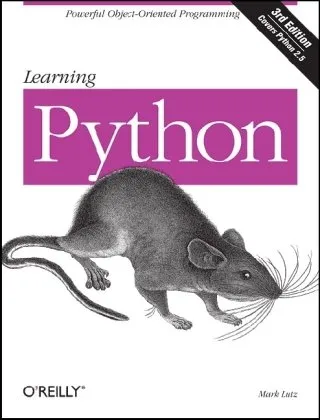

![DATA SCIENCE FROM SCRATCH: From Data Visualization To Manipulation. It Is The Easy Way! All You Need For Business Using The Basic Principles Of Python And Beyond [REVISED & EXPANDED EDITION]](https://s3.refhub.ir/images/thumb/DATA_SCIENCE_FROM_SCRATCH__From_Data_Visualiz_4549.webp)
